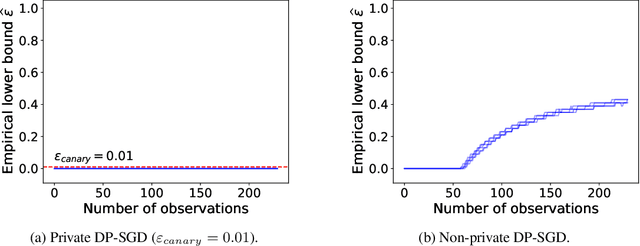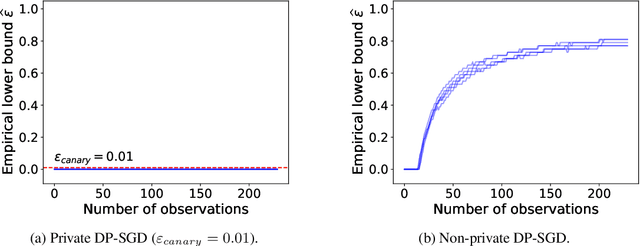Aaditya Ramdas
Adaptive Off-Policy Inference for M-Estimators Under Model Misspecification
Sep 17, 2025Abstract:When data are collected adaptively, such as in bandit algorithms, classical statistical approaches such as ordinary least squares and $M$-estimation will often fail to achieve asymptotic normality. Although recent lines of work have modified the classical approaches to ensure valid inference on adaptively collected data, most of these works assume that the model is correctly specified. We propose a method that provides valid inference for M-estimators that use adaptively collected bandit data with a (possibly) misspecified working model. A key ingredient in our approach is the use of flexible machine learning approaches to stabilize the variance induced by adaptive data collection. A major novelty is that our procedure enables the construction of valid confidence sets even in settings where treatment policies are unstable and non-converging, such as when there is no unique optimal arm and standard bandit algorithms are used. Empirical results on semi-synthetic datasets constructed from the Osteoarthritis Initiative demonstrate that the method maintains type I error control, while existing methods for inference in adaptive settings do not cover in the misspecified case.
Sequentially Auditing Differential Privacy
Sep 08, 2025



Abstract:We propose a practical sequential test for auditing differential privacy guarantees of black-box mechanisms. The test processes streams of mechanisms' outputs providing anytime-valid inference while controlling Type I error, overcoming the fixed sample size limitation of previous batch auditing methods. Experiments show this test detects violations with sample sizes that are orders of magnitude smaller than existing methods, reducing this number from 50K to a few hundred examples, across diverse realistic mechanisms. Notably, it identifies DP-SGD privacy violations in \textit{under} one training run, unlike prior methods needing full model training.
A variational approach to dimension-free self-normalized concentration
Aug 08, 2025Abstract:We study the self-normalized concentration of vector-valued stochastic processes. We focus on bounds for sub-$\psi$ processes, a tail condition that encompasses a wide variety of well-known distributions (including sub-exponential, sub-Gaussian, sub-gamma, and sub-Poisson distributions). Our results recover and generalize the influential bound of Abbasi-Yadkori et al. (2011) and fill a gap in the literature between determinant-based bounds and those based on condition numbers. As applications we prove a Bernstein inequality for random vectors satisfying a moment condition (which is more general than boundedness), and also provide the first dimension-free, self-normalized empirical Bernstein inequality. Our techniques are based on the variational (PAC-Bayes) approach to concentration.
Private Evolution Converges
Jun 10, 2025Abstract:Private Evolution (PE) is a promising training-free method for differentially private (DP) synthetic data generation. While it achieves strong performance in some domains (e.g., images and text), its behavior in others (e.g., tabular data) is less consistent. To date, the only theoretical analysis of the convergence of PE depends on unrealistic assumptions about both the algorithm's behavior and the structure of the sensitive dataset. In this work, we develop a new theoretical framework to explain PE's practical behavior and identify sufficient conditions for its convergence. For $d$-dimensional sensitive datasets with $n$ data points from a bounded domain, we prove that PE produces an $(\epsilon, \delta)$-DP synthetic dataset with expected 1-Wasserstein distance of order $\tilde{O}(d(n\epsilon)^{-1/d})$ from the original, establishing worst-case convergence of the algorithm as $n \to \infty$. Our analysis extends to general Banach spaces as well. We also connect PE to the Private Signed Measure Mechanism, a method for DP synthetic data generation that has thus far not seen much practical adoption. We demonstrate the practical relevance of our theoretical findings in simulations.
Conformal changepoint localization
May 01, 2025Abstract:Changepoint localization is the problem of estimating the index at which a change occurred in the data generating distribution of an ordered list of data, or declaring that no change occurred. We present the broadly applicable CONCH (CONformal CHangepoint localization) algorithm, which uses a matrix of conformal p-values to produce a confidence interval for a (single) changepoint under the mild assumption that the pre-change and post-change distributions are each exchangeable. We exemplify the CONCH algorithm on a variety of synthetic and real-world datasets, including using black-box pre-trained classifiers to detect changes in sequences of images or text.
Conditional independence testing with a single realization of a multivariate nonstationary nonlinear time series
Apr 30, 2025Abstract:Identifying relationships among stochastic processes is a key goal in disciplines that deal with complex temporal systems, such as economics. While the standard toolkit for multivariate time series analysis has many advantages, it can be difficult to capture nonlinear dynamics using linear vector autoregressive models. This difficulty has motivated the development of methods for variable selection, causal discovery, and graphical modeling for nonlinear time series, which routinely employ nonparametric tests for conditional independence. In this paper, we introduce the first framework for conditional independence testing that works with a single realization of a nonstationary nonlinear process. The key technical ingredients are time-varying nonlinear regression, time-varying covariance estimation, and a distribution-uniform strong Gaussian approximation.
On Stopping Times of Power-one Sequential Tests: Tight Lower and Upper Bounds
Apr 28, 2025Abstract:We prove two lower bounds for stopping times of sequential tests between general composite nulls and alternatives. The first lower bound is for the setting where the type-1 error level $\alpha$ approaches zero, and equals $\log(1/\alpha)$ divided by a certain infimum KL divergence, termed $\operatorname{KL_{inf}}$. The second lower bound applies to the setting where $\alpha$ is fixed and $\operatorname{KL_{inf}}$ approaches 0 (meaning that the null and alternative sets are not separated) and equals $c \operatorname{KL_{inf}}^{-1} \log \log \operatorname{KL_{inf}}^{-1}$ for a universal constant $c > 0$. We also provide a sufficient condition for matching the upper bounds and show that this condition is met in several special cases. Given past work, these upper and lower bounds are unsurprising in their form; our main contribution is the generality in which they hold, for example, not requiring reference measures or compactness of the classes.
Locally minimax optimal and dimension-agnostic discrete argmin inference
Mar 27, 2025Abstract:We revisit the discrete argmin inference problem in high-dimensional settings. Given $n$ observations from a $d$ dimensional vector, the goal is to test whether the $r$th component of the mean vector is the smallest among all components. We propose dimension-agnostic tests that maintain validity regardless of how $d$ scales with $n$, and regardless of arbitrary ties in the mean vector. Notably, our validity holds under mild moment conditions, requiring little more than finiteness of a second moment, and permitting possibly strong dependence between coordinates. In addition, we establish the local minimax separation rate for this problem, which adapts to the cardinality of a confusion set, and show that the proposed tests attain this rate. Our method uses the sample splitting and self-normalization approach of Kim and Ramdas (2024). Our tests can be easily inverted to yield confidence sets for the argmin index. Empirical results illustrate the strong performance of our approach in terms of type I error control and power compared to existing methods.
Online Selective Conformal Prediction: Errors and Solutions
Mar 21, 2025Abstract:In online selective conformal inference, data arrives sequentially, and prediction intervals are constructed only when an online selection rule is met. Since online selections may break the exchangeability between the selected test datum and the rest of the data, one must correct for this by suitably selecting the calibration data. In this paper, we evaluate existing calibration selection strategies and pinpoint some fundamental errors in the associated claims that guarantee selection-conditional coverage and control of the false coverage rate (FCR). To address these shortcomings, we propose novel calibration selection strategies that provably preserve the exchangeability of the calibration data and the selected test datum. Consequently, we demonstrate that online selective conformal inference with these strategies guarantees both selection-conditional coverage and FCR control. Our theoretical findings are supported by experimental evidence examining tradeoffs between valid methods.
Improving the statistical efficiency of cross-conformal prediction
Mar 03, 2025Abstract:Vovk (2015) introduced cross-conformal prediction, a modification of split conformal designed to improve the width of prediction sets. The method, when trained with a miscoverage rate equal to $\alpha$ and $n \gg K$, ensures a marginal coverage of at least $1 - 2\alpha - 2(1-\alpha)(K-1)/(n+K)$, where $n$ is the number of observations and $K$ denotes the number of folds. A simple modification of the method achieves coverage of at least $1-2\alpha$. In this work, we propose new variants of both methods that yield smaller prediction sets without compromising the latter theoretical guarantee. The proposed methods are based on recent results deriving more statistically efficient combination of p-values that leverage exchangeability and randomization. Simulations confirm the theoretical findings and bring out some important tradeoffs.
 Add to Chrome
Add to Chrome Add to Firefox
Add to Firefox Add to Edge
Add to Edge